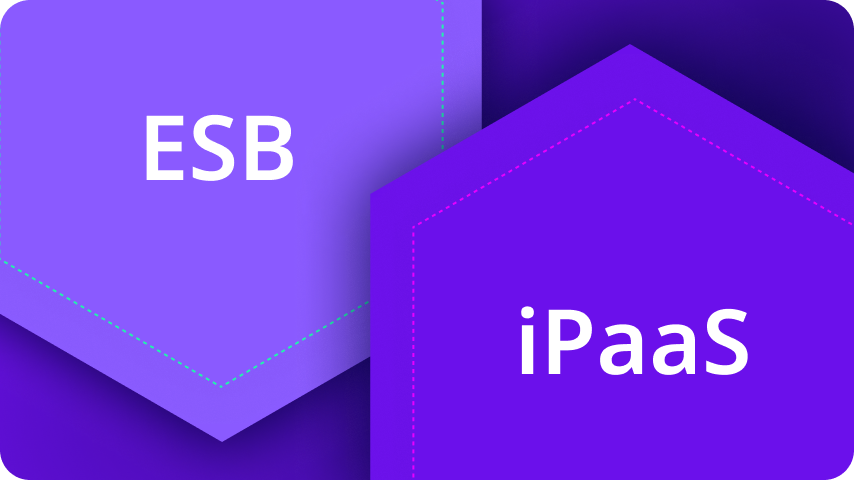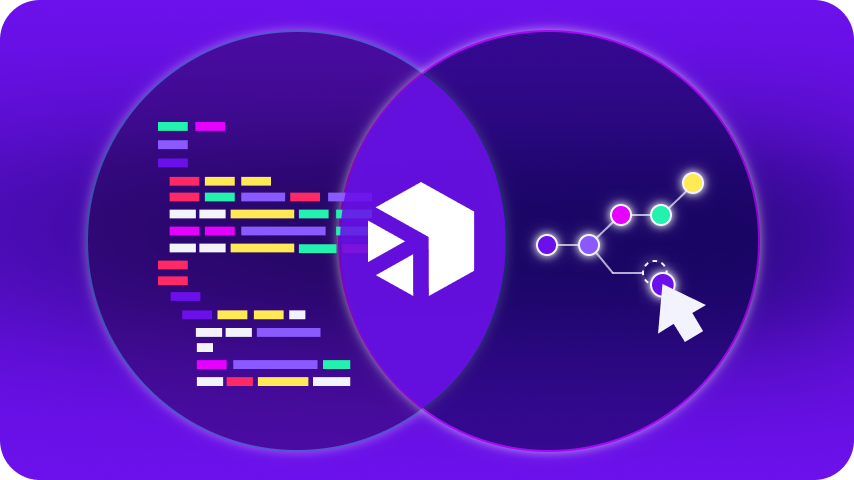April 6, 2023
This blog is part of an occasional series that we share to help integration-focused IT and development professionals to educate your organizational peers and advocate for the important work you do.
Business and IT leaders struggle with complex – and often pricey – IT decisions that have significant and lasting effects on their companies. The IT landscape is constantly changing, so it can be difficult to know what’s best for right now and for the future. The wrong decision could hit a company’s bottom line hard and cause ongoing headaches that are entirely avoidable.
This article compares Enterprise Service Bus (ESB) models with integration-as-a-service (iPaaS) solutions for today’s integration needs. For a fair comparison, first, you should understand the difference between ESB and iPaaS.
What is an Enterprise Service Bus?
The Enterprise Service Bus, or ESB, is a centralized hub that establishes rules to guide the communication capabilities of different applications. The biggest limitation of an ESB is that it was developed before the advancement of cloud-based services, so ESBs are usually limited to connecting on-premises legacy or backend systems that will not change or scale.
What Does ESB Mean for Your IT Integration?
ESB has been around since the 1990s, when it replaced many point-to-point (P2P) integration models, which were limited to connecting only two applications at a time.
ESB integrations were a big advancement at the time, because the model allows multiple applications to connect through a pluggable bus-like infrastructure. It works by connecting systems, functionality, and application data, and enabling these capabilities to communicate with other applications.
What is Integration Platform-as-a-Service (iPaaS)?
The evolution of IT integration has led to the development of integration platform-as-a-service (iPaaS). An iPaaS integration solution has the capability to connect on-premises, cloud-based, and hybrid application systems, providing much more flexibility, functionality, and scalability than an ESB model.
Subscription-based iPaaS can help reduce the time and cost of your IT integrations, which ultimately helps your company gain faster time to value.
How an Enterprise iPaaS Can Help You Achieve Corporate Goals
C-suite and other business leaders must always consider growth and the bottom line. An enterprise iPaaS allows you to do both because it can ultimately be less expensive, more flexible, and more scalable than traditional P2P or ESB integration models. Plus, it can be implemented much quicker than other methods. An example of this is outlined below.
Digibee integrated a secure e-commerce platform for international retailer Payless Shoes across more than 200 stores in 15 countries. The ease of using the enterprise iPaaS architecture meant that the implementation took less than 30 days.
Each country had different fiscal and legal requirements, but the flexibility of the iPaaS accommodated the functional variety. The system flexibility also allows the scalability and retractability of seasonal spikes for the busy retailer.
The result is that Digibee’s enterprise iPaaS platform effectively provided:
- Efficiency through the automation and standardization of integration processes across 200+ stores in 15 countries.
- Security with end-to-end encryption of all messages.
- Visibility and transparency by tracking integration steps in real time.
- Scalability and business agility for quick responses during peak sales periods
The Advantages of iPaaS
There is an old saying that “legacy” technologies are simply technologies that continue to work. This certainly can be true for P2P and ESB integrations, but mostly for specific use cases where change isn’t anticipated or required for your business to grow. So if you are still using these legacy tools, Digibee’s iPaaS can help you transform your more mission critical systems and applications to be more flexible and scalable, by untangling and simplifying your integration architecture.
Digibee provides a smooth, streamlined, and fast IT integration experience. Digibee’s enterprise iPaaS is a cloud-native, enterprise-ready integration platform that accelerates time-to-value, mitigates risks, and helps reduce IT costs. Digibee’s easy-to-use enterprise iPaaS is also intuitive, so all levels of IT staff can manage the platform with very little training required.
It’s time to move forward with Digibee. Learn How to Integrate and Modernize Your Enterprise.
Discover all the benefits of Digibee’s modern cloud integration platform. Read the Digibee resource, 5 (+1) Reasons to Choose Digibee Over a Traditional iPaaS.













